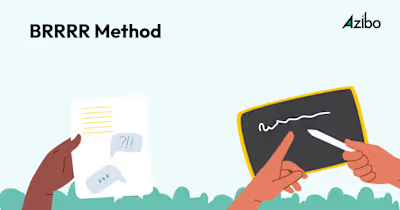What Is Mortgage Origination?

When getting a mortgage, you'll often work with a lender. We cover all you need to know about this mortgage origination process.
Mortgage origination is the process of working with a lender to complete a real estate transaction. This process begins when you submit a formal application for a mortgage and ends on closing day.
Every mortgage loan application goes through the mortgage origination process. During this period, the lender evaluates the borrower’s finances, as well as the property’s condition and characteristics to determine if the borrower’s loan application meets the lender’s criteria.
In this article, we’ll review the mortgage origination process, including how much it costs, the steps, and how to prepare.
How much are loan origination fees?
Mortgage origination fees cover the cost of underwriting and administering a loan. They’re usually 0.5% to 1% of the loan principal. However, origination fees can be as high as 2% if the lender considers the borrower risky. A low credit score or multiple credit inquiries in a short period of time might signal a higher lending risk.
Loan origination process
Mortgage loan origination usually takes between 30-60 days to complete. The speed of the process depends on the type of mortgage being originated and the borrower’s financial profile. Regardless of the lender you choose, you’ll typically go through the following loan origination steps after you sign a purchase and sale agreement.
Pre-qualifying period
Some borrowers may choose to go through a pre-qualification process before officially applying for a mortgage loan. Not all lenders offer pre-qualification as an option, and may recommend getting pre-approved instead. If pre-qualification is an option, it’s a great way to get a rough estimate of the amount you’re eligible to borrow based on your self-reported finances. The process typically only takes a few minutes and can be completed with a lender online or over the phone. If you’re interested in getting pre-qualified with us at Zillow Home Loans*, the process takes as little as three minutes and has no impact on your credit.
A mortgage pre-approval will provide a more comprehensive conditional loan estimate than a pre-qualification. Unlike pre-qualification, pre-approval is a conditional commitment from a lender to loan you money based on your verified credit history, income, assets, and debts. According to a 2024 Zillow survey, almost all mortgage buyers (94%) reported getting pre-approved for financing.
Loan application
Once you’ve signed a purchase and sale agreement, submit a mortgage application with one or more lenders. If you were pre-approved for a mortgage and your pre-approval hasn’t expired or your financial circumstances changed, your original pre-approval will still be valid and can be used to begin your mortgage application.
If you skipped the pre-approval process, you’ll need to provide documentation to begin the loan approval process. Borrowers typically provide one month’s worth of pay stubs, two years worth of tax returns, and two months worth of bank statements to prove their financial eligibility. Lenders may also ask for two years of personal addresses and employer contact information, or documents related to assets, such as stocks, bonds, and retirement accounts.
Final mortgage approval depends on the property’s evaluation. As long as the property evaluation goes well and there are no major changes to your financial situation before closing, you should get approved for the amount listed in your pre-approval letter.
Home appraisal
Your lender will hire an independent appraiser to assess the property’s value. Appraisers determine home values by comparing the property to similar properties on the market. Appraisers will consider recent home sales for properties with similar square footage, layout, and amenities.
If the appraised value matches or exceeds the home’s sales price, borrowers can proceed with the mortgage loan. However, if the appraisal comes in lower than the sales price, you can do one of three things: pay the difference at closing, renegotiate the sales price, or cancel the purchasing contract with your seller and look for another home.
Note to borrowers:
While a lender will probably request an appraisal for a new mortgage, they don’t always require a home inspection. It’s recommended to get a home inspection before getting an appraisal, because an inspection provides a thorough assessment of the property’s condition.
Since the appraiser focuses on the property’s overall value, structural and mechanical issues can easily be missed, especially if they’re not in plain sight. This can lead to an inflated appraisal value, which can negatively impact your chances of approval.
Ordering a home inspection before an appraisal can help you identify any property issues or repairs that would need to take place before finalizing your home sale. This could help you negotiate a lower sales price with your seller.
Underwriting
Once your lender receives the completed appraisal, your lender will have their underwriting department review your formal application to assess your borrowing risk. Underwriters typically start by using a software program to automate the process. They’ll make sure your financial information and the property evaluation meet the loan and lender requirements. Sometimes, underwriting is done manually or in combination with an automated underwriting system — but manual reviews are less common.
Once the assessment is complete, the lender can either approve or deny your loan application. It’s not uncommon for lenders to ask for more information, which constitutes a conditional approval.
Be sure to submit any additional documents, such as recent pay stubs and homeowners insurance policy, to avoid delays. It’s also important to avoid changing jobs, requesting new credit (like a new loan, credit card or additional credit charges), or withdrawing large amounts of cash during underwriting. Lenders will conduct a final check before closing to make sure your finances remain consistent.
Loan approval
Once your lender has received all necessary documents and concluded the underwriting process, they will issue a commitment letter. This letter officially states the lender is willing to provide the borrower with a mortgage loan under specific terms. The commitment letter outlines the loan amount, interest rate, and any contingencies that must be met before the loan is finalized.
Closing day
Once your commitment letter is issued, the lender can initiate the closing process. Your lender, in conjunction with a title company, will prepare closing documents and schedule a closing day. At least three business days before closing, your lender will send you a Closing Disclosure detailing the specific fees and costs of your loan agreement.
Be sure to review the spelling of your name, loan terms, compare the Closing Disclosure to your Loan Estimate, and prepayment penalties. Request any necessary changes before closing day. At closing, you’ll sign paperwork agreeing to the loan terms, and the title and escrow company will disburse the funds needed to purchase the property. This is also when you pay the origination fee as part of the closing costs. Once these steps are complete, the title will be transferred to your name, and you’ll be handed the keys to the property.
How to prepare for the loan origination process
Mortgage origination has a lot of moving parts that can be complicated to account for. Luckily, there are a few things you can do as a prospective borrower to make the process go smoothly.
Gather documentation
The first thing you want to do is gather all documents that could help you get approved for a loan. Since lenders might ask for additional documentation throughout the origination process, it’s best to compile more documents than you think are necessary.
While your ID and bank statements may be readily available, you might have to request certain documentation in advance, such as a current statement of your assets and investments. Keep all documents organized to facilitate a smooth approval.
Improve your credit score
Be sure to check your credit score with all three major credit bureaus before applying for any kind of financing. Your credit score will have a significant impact on whether you get approved for a mortgage and at what rate. Before submitting an application, make sure there are no errors on your report. If there are, clear them up by disputing unfamiliar claims, negotiating with debtors, or paying down your debts.
Compare rates
Lastly, shop around for competitive rates from multiple lenders, and consider different types of lenders. such as banks, online lenders, and credit unions. Many lenders offer preliminary quotes that you can use to compare interest rates, closing costs, and loan terms. These quotes won't provide you with as much information as a pre-approval, but they can help you identify which lenders are a good fit for the type of mortgage you need. Request at least three quotes. Start with your current bank to see what kind of customer benefits they offer, and ask friends and family for recommendations. You can also get pre-qualified with us at Zillow Home Loans*.
*An equal housing lender. NMLS #10287
Written by
12.21.2024
How much home can you afford?
At Zillow Home Loans, we can pre-qualify you in as little as 5 minutes, with no impact to your credit score.
Zillow Home Loans, NMLS # 10287. Equal Housing Lender
Related Articles
What Is a Home Inspection Contingency?
What Are Cash Reserves for a Mortgage?
What Is a 30-Year Fixed-Rate Mortgage?
Thinking about buying but not sure where to begin?
Start with our affordability calculator.
Like this project
Posted Mar 24, 2025
Understand what mortgage origination is and what lenders consider when creating a mortgage loan for borrowers.







